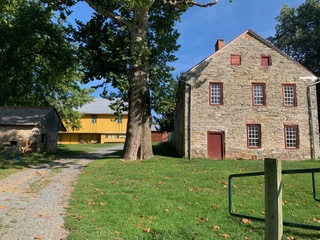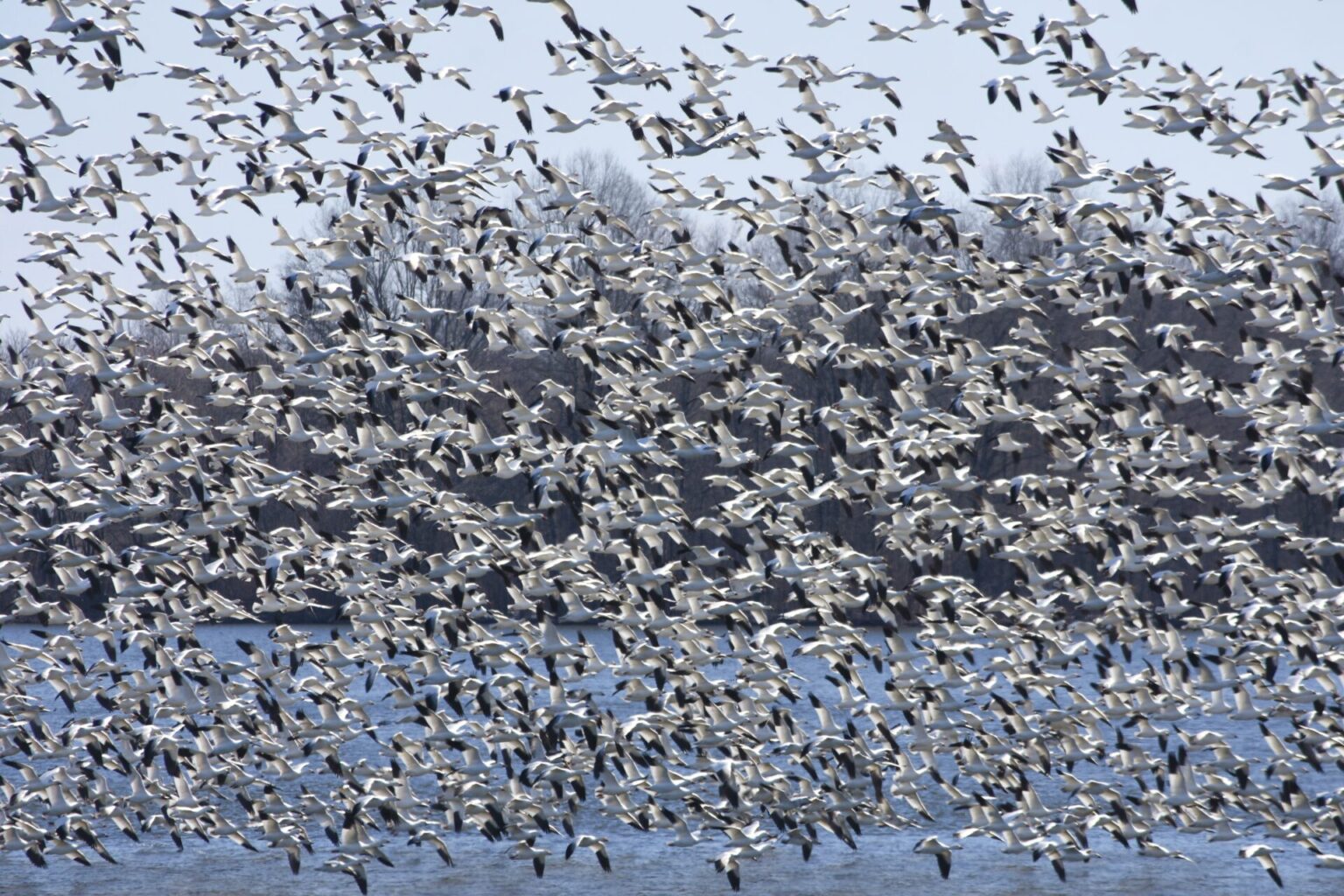The sight is simply astounding. Thousands of snow geese take flight from the brilliant blue waters of Middle Creek Lake and fill the sky with a choreographed aerial ballet of swirling motion and fluttering white wings. Every winter these majestic waterfowl migrate through Middle Creek Wildlife Management Area (MCWMA), located on the border of Lebanon and Lancaster Counties. Only a two-hour drive away, this 6000-acre preserve is a birder and naturalist paradise.
MCWMA was created in 1973 to improve habitat for Canada geese, but the conservation effort initiated by the Pennsylvania Game Commission, which manages the property, resulted in an unimaginable abundance of other waterfowl and bird species. Today, Middle Creek is considered a globally important bird area because of their success attracting major migrations.
Joan and Buck Amsley recently took a trip to Middle Creek from Waynesboro. “It was like lace in the sky,” Joan said. “Seeing those birds flying together was one of the most beautiful sights I’ve ever seen,” she said. “I can’t wait to go back.”
In a habitat that includes a man-made lake (which was created by damning Middle Creek), rolling hills, grasslands, forests and wetlands, over 300 bird species can be found at WCWMA. The refuge is visitor-friendly and a favorite spot to watch activity is on Willow Point Trail, an easily-walked .4 mile paved trail that leads to the water’s edge.
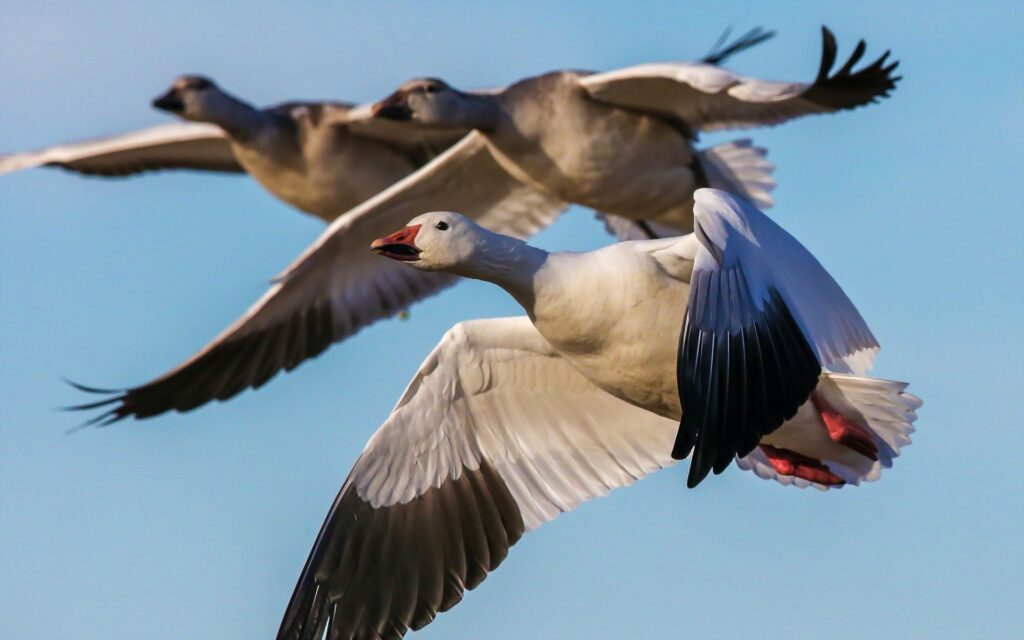
The amazing diversity found here extends to other flora and fauna too, as mammals, insects, and plants thrive at MCWMA. During a recent visit, a red-tail hawk posed in a lakeside tree. But the highlight for birders is the spring and autumn migrations. In late-winter, the stars of that show are snow geese and tundra swans.
Snow geese are one of the world’s most abundant waterfowl species. The Eastern population breeds in the artic and subarctic regions of North America during the spring and summer (at islands like Ellesmere and Baffin), and then migrates south to winter in U.S. Atlantic coastal areas with stopovers in between. During migration, Snow geese fly day and night in large flocks. They are strong flyers, reaching up to 50 miles per hour. Snow geese travel on all four North American flyways.
Middle Creek is a now a favorite Pennsylvania temporary snow geese home, typically from mid-February to mid-March. In record seasons, up to 170,000 Snow geese have been counted at Middle Creek, and sometimes they cover a majority of the lake’s surface area- a truly remarkable event. Estimating any year’s attendance numbers is a tricky prediction, since weather conditions (daily air temperatures and snow ground-cover) will dictate when, and how many, snow geese pass through Middle Creek.
Snow geese are adept swimmers, and at MCWMA they typically sleep on the water after a 12-hour days foraging on land. They feed on an abundance of Pennsylvania aquatic grasses, sedges, berries, and grains from local harvested fields. They are very vocal birds, and their honking is unmistakable when they gather in large groups. These birds weigh up to 7 pounds and their white bodies have dark tips on wings that spread up to 54 inches wide. For maximum viewing, the best times to see snow geese at MCWMA are the first and last hours of daylight.
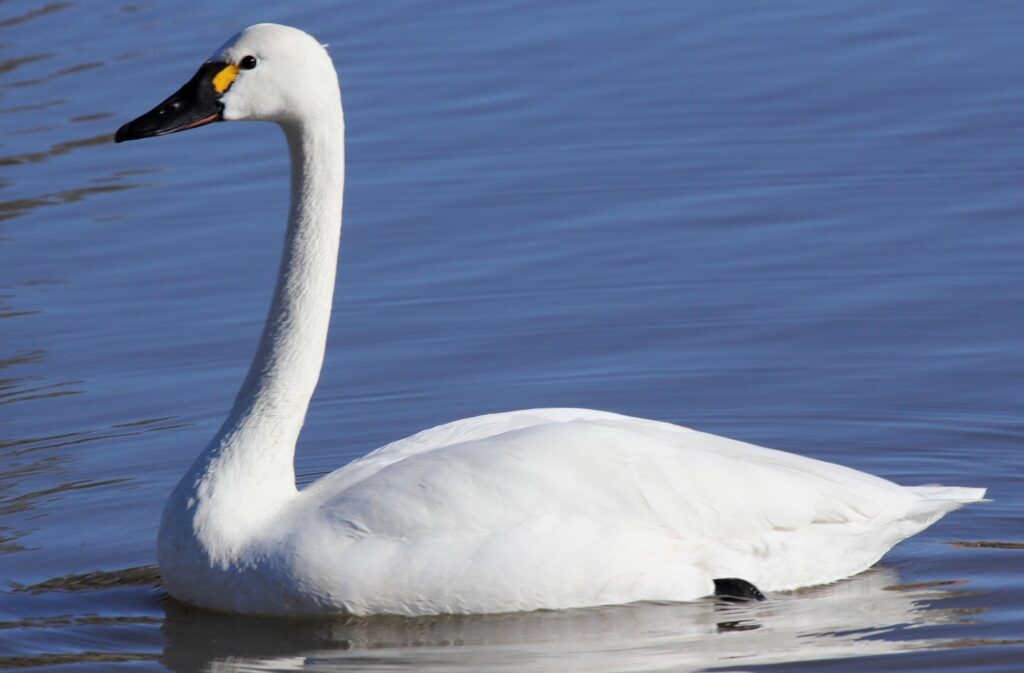
Tundra swans also pass through Middle Creek in winter. Their numbers never match the snow geese, but they are still an amazing species to witness. Tundra swans, formerly known as “whistling swans”, are also a large species. Their wingspans can reach 66 inches and larger males can weigh up to 18 pounds. The sexes look alike, with a yellow spot in front of the eye. Pairs mate for life. To differentiate between other species, tundra swans hold their neck straight, while mute swans curve theirs. Like snow geese, tundra swans are swift flyers, cruising 50 mph at altitudes from 1800 to 4500 feet. They migrate as far west as Alaska to breed during the late spring and summer.
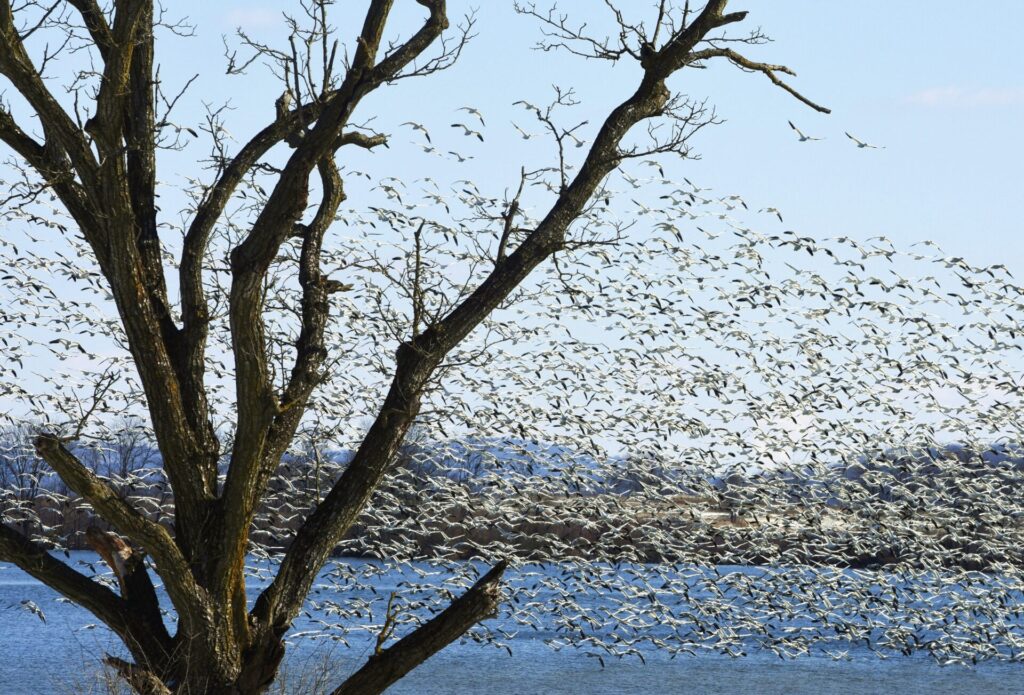
The Pennsylvania Game Commission gives Middle Creek visitors quality resources to enjoy the Wildlife Management Area. The Visitor Center is filled with interactive wildlife exhibits and helpful staff to answer questions. The lake can be seen from the VC’s hillside location.
Driving and hiking maps are available with seven main stops to see while driving. Hikers can explore easy hikes less than a mile or attempt more strenuous walks up to eight miles. Mountain biking and horseback riding are permitted on certain trails, ATVs are not. Middle Creek even has its own radio station at 1620 AM. The entire Wildlife Management Area is free. For hours, winter road closures, and other outdoor information, contact MCWMA: 717-733-1512, or email: [email protected]. The GPS location is 100 Museum Road, Stevens, PA.
For a human stopover when migrating to or from Middle Creek, Schaefferstown is a nearby German-Swiss community with historic sites and restaurants in Lebanon County. The charming downtown is a National Register Historic District and hosts numerous events throughout the year: hsimuseum.org, 717-949-2244.
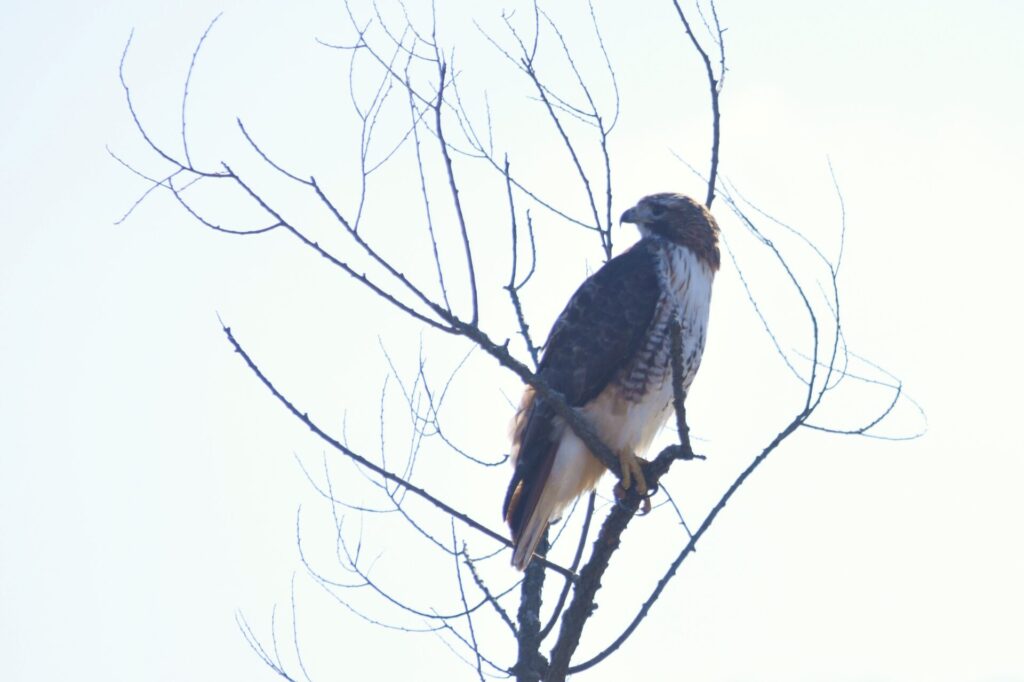
Bird-watching potential is now in peak form at Middle Creek WMA. Bring binoculars, a camera with a telephoto lens, or simply your curiosity to this wonderful natural venue in central Pennsylvania. This destination is an excellent day-trip, or build in an overnight stay to see more potential bird sightings near sunrise and sundown.
